This Greek salad is a classic that you’ll find yourself making again and again. It takes just minutes to make, and the combination of crisp vegetables, briny olives, salty feta, and the light vinaigrette is impossible to resist!
Spring is here, and summer will be here before you know it. I don’t know about you, but when the weather starts warming up, I find myself craving light meals full of bright colors and bold flavors.

All those creamy casseroles and cozy soups do a great job keeping us warm during the long, cold winter months, but now it’s time to fill our plates with colorful fresh fruits and vegetables.
Enter this Greek salad.
Greek Salad
This is a dish where colors, flavors, and textures take center stage. Juicy tomatoes and crisp cucumbers and peppers; briny kalamata olives and salty feta.
And it all comes together with the simplest Greek salad dressing, seasoned with oregano for some of that signature Mediterranean flair. Pair it with Greek chicken for the perfect warm weather dinner.
Why You’ll Love It
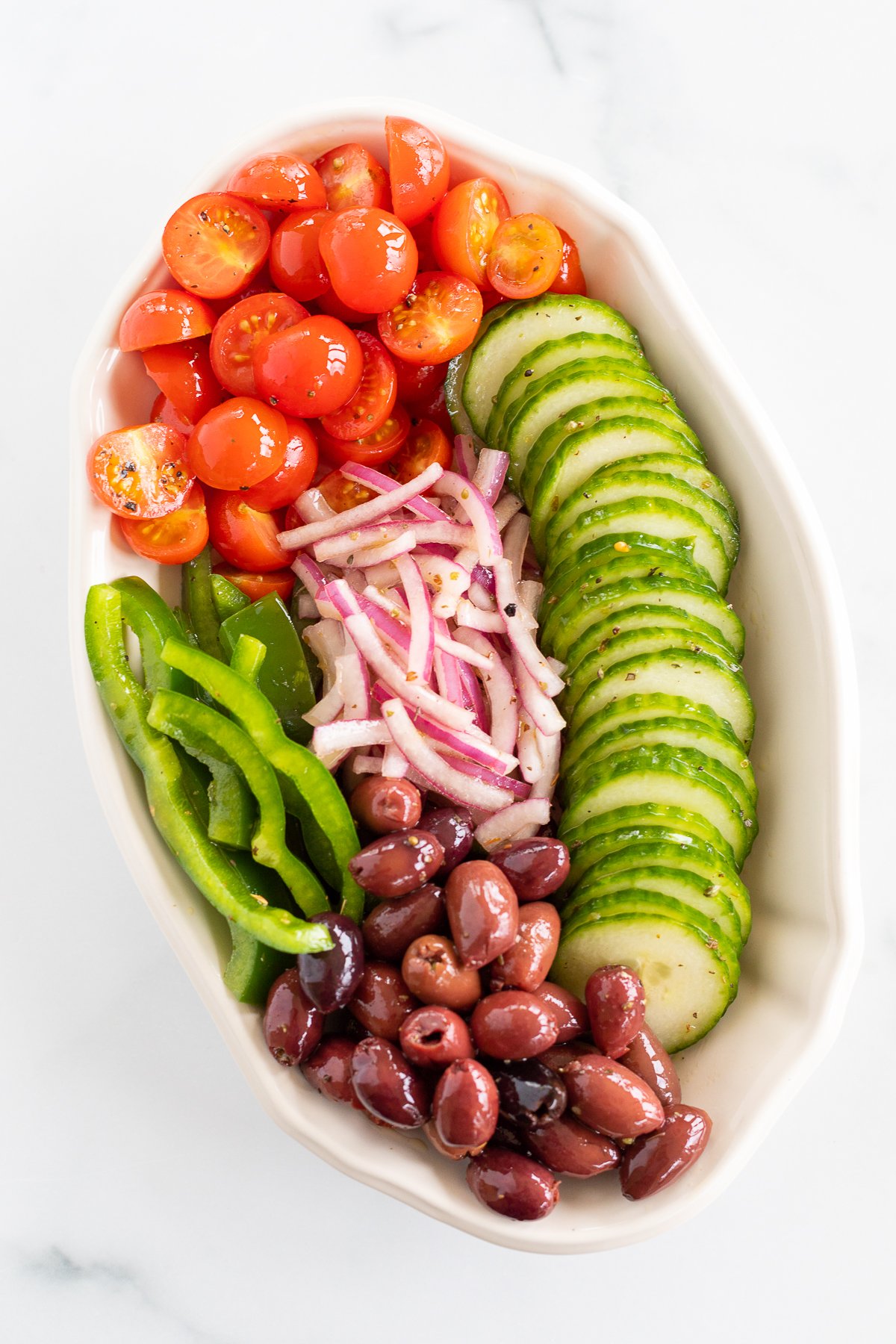

Dietary Note
If you’re on a dairy-free diet – or you’re not a fan of feta – you can skip it or swap it out with extra olives. A briny green olive would be a nice color contrast to kalamatas.
Ingredients and Substitutions
- Cherry tomatoes – I love the cherry tomatoes that come on the vine, but you can use another variety if you’d like. Grape tomatoes, colorful heirloom varieties—they’re all a great addition to a Greek salad.
- English cucumber – English cucumber has smaller seeds than garden cucumbers; if you use a regular cucumber, you can cut it lengthwise and then scoop out the seeds with a spoon before slicing it. This will keep the salad from getting soggy.
- Green bell pepper – Green bell pepper has a more pungent flavor than red, orange, or yellow.
- Red onion – If you’re not a fan of onions, try slicing them so thin they’re almost shaved. Once they’re tossed in the dressing and left to soak it up a bit, their flavor will be much milder.
- Olives – We used pitted kalamatas.
- Feta cheese – Diced or thick-sliced—whichever you prefer.
Greek Dressing:
- Extra-virgin olive oil – Greek salad is a good excuse to break out that bottle of super fancy olive oil from your pantry.
- Red wine vinegar – To me, this is really key to that classic Greek salad flavor, although some people prefer lemon juice.
- Dry oregano
- Sea salt
- Ground pepper
Variations
- Try swapping the green bell pepper for red bell pepper, or use a combination of both. Not a fan of the texture of fresh bell peppers? Try roasted red peppers instead.
- Make extra dressing and use it as a marinade for grilled chicken or shrimp. Add the chicken or shrimp to the Greek salad for a complete dinner.
- Serve the Greek salad with cooked quinoa or toss it with orzo for a deli-style salad that’s perfect for work and school lunches.
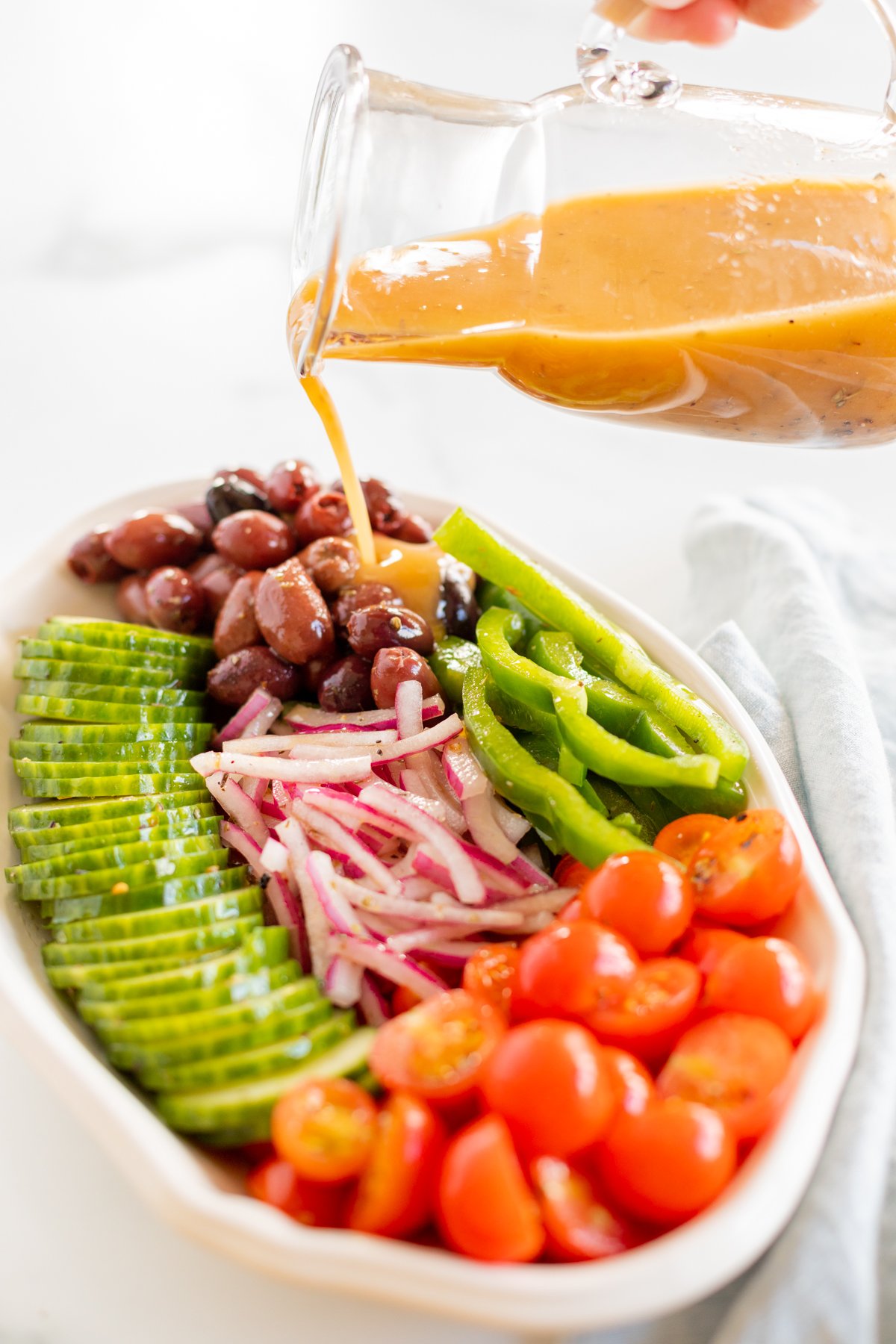
Directions
- Make the dressing – Combine all of the dressing ingredients in a jar and shake it vigorously until the dressing is emulsified.
- Assemble – Pour the dressing over the salad ingredients, gently toss to coat, and sprinkle the salad with additional oregano before serving.

Tip
You can assemble this as a tossed salad, or arrange your Greek salad ingredients on a platter for more visual impact and then pour the dressing over the top.
Shortcut
For a salad with practically no prep time, go to the salad bar at your grocery store and buy all the veggies, olives, and feta there. No slicing, dicing, and chopping needed!
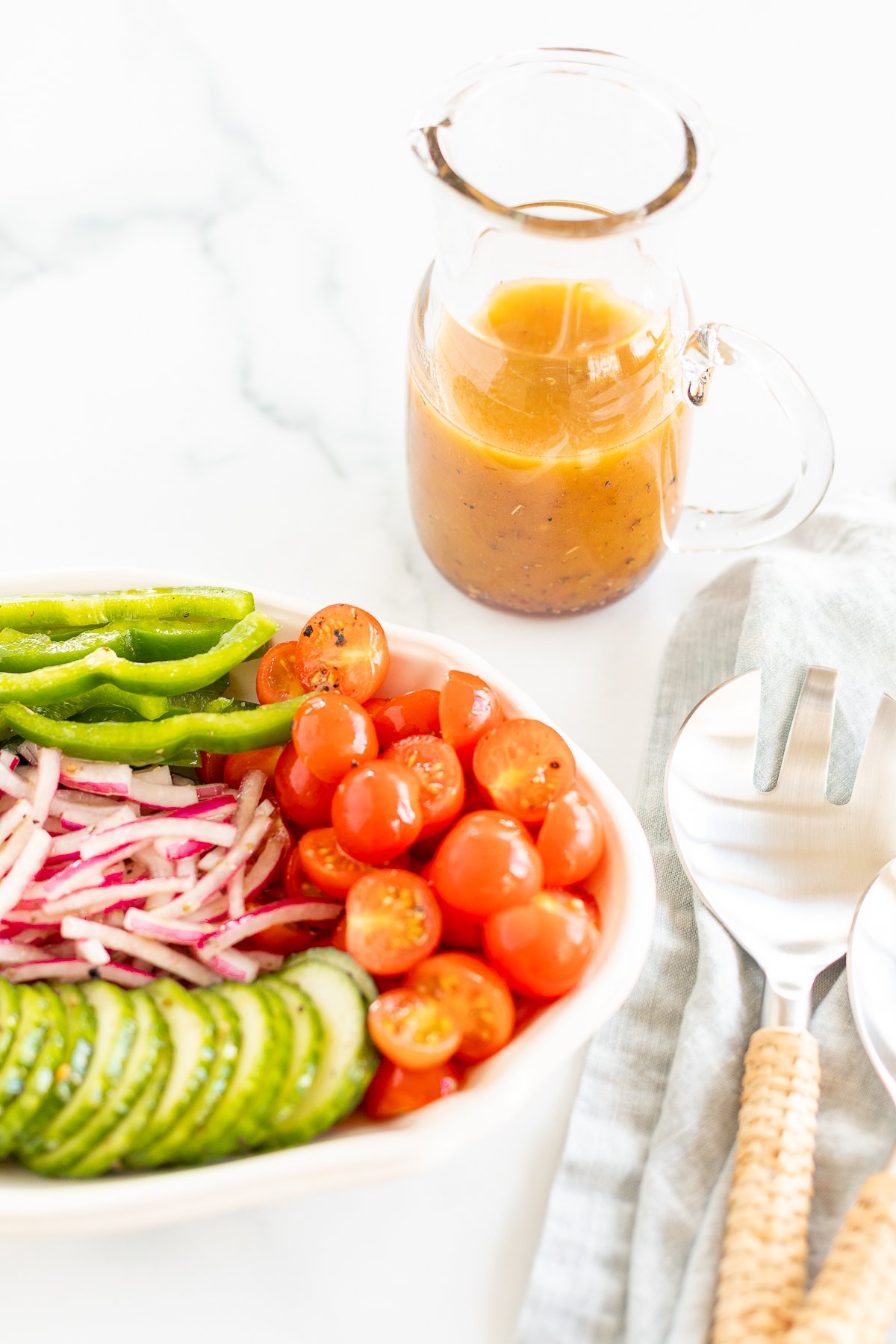
How to Store
Store Greek salad in an airtight container in the refrigerator. If you’ve already added the dressing, it will last about 2 days; undressed salad can last 3 to 4 days. Give the dressing a good shake before using it.
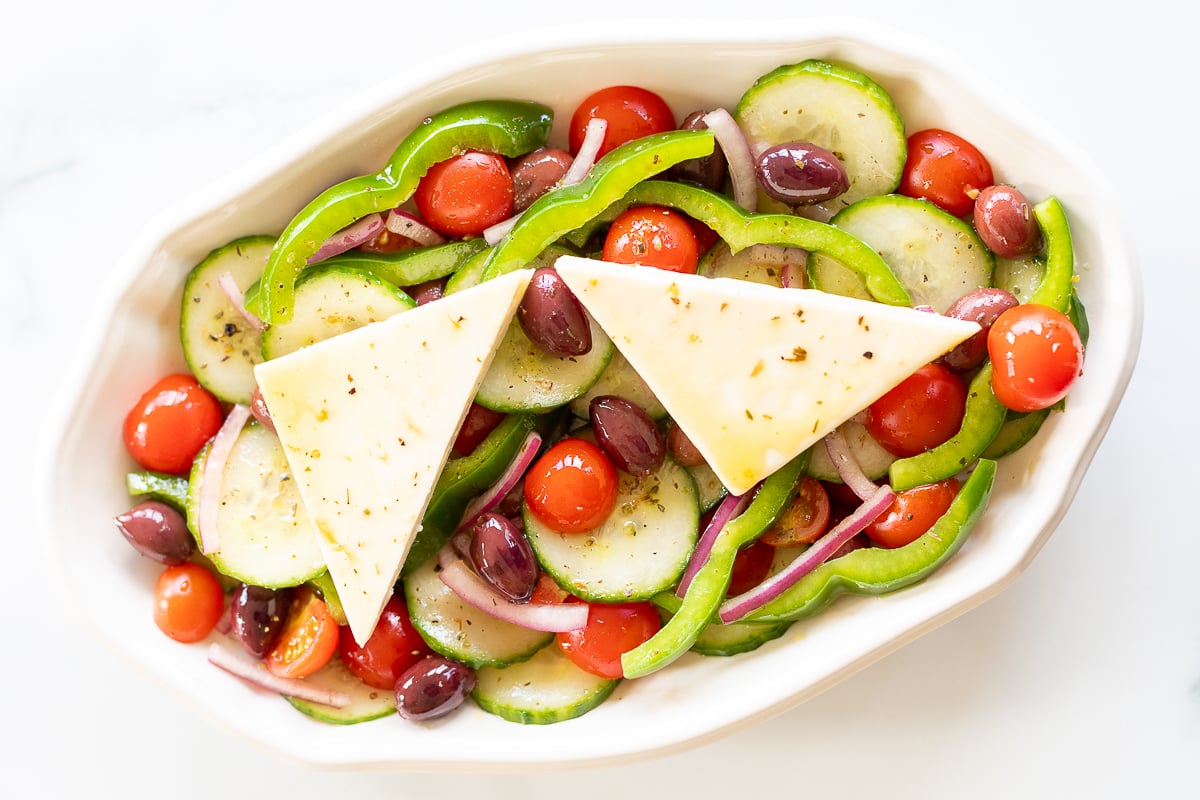
Frequently Asked Questions
No, Greek salad does not typically contain lettuce, although you can definitely add it if you’d like! Traditionally, though, Greek salad is a combination of vine-ripened tomatoes, cucumbers, bell peppers, olives, feta cheese, and red onions all tossed together in a light vinaigrette.
Greek salad is a great choice for anyone who wants to add more vegetables to their diet. The red wine vinaigrette is olive oil-based, so it’s much lower in calories and saturated fat than most creamy dressings, and all of the fresh vegetables are loaded with vitamins, minerals, and fiber.
I use halved cherry tomatoes, but if you’re using larger tomatoes, cut them into wedges. This will give your salad more visual appeal than diced tomatoes!
Greek salad pairs well with grilled meats, chicken, and seafood. It also tastes amazing as a topping for gyros or pita sandwiches. For a vegetarian meal, you can serve Greek salad with roasted chickpeas or baked falafel—crumbled falafel is so good on a salad!
Make More (or Less!)
Scaling up, down or substituting? You’ll love this printable Measurement Conversion Chart!

Tips
-
For extra flavor, add some fresh herbs—mint, parsley, basil, and oregano all work well with the Mediterranean flavors of Greek salad. You can add capers to the dressing too, if you’d like.
-
Dry the vegetables well; if there’s any water clinging to them when you toss them together and add the dressing, your salad will end up soggy and the flavors will be watered down.
-
Serve it with crusty bread or pita to soak up the dressing and bits of feta that are left on your plate.
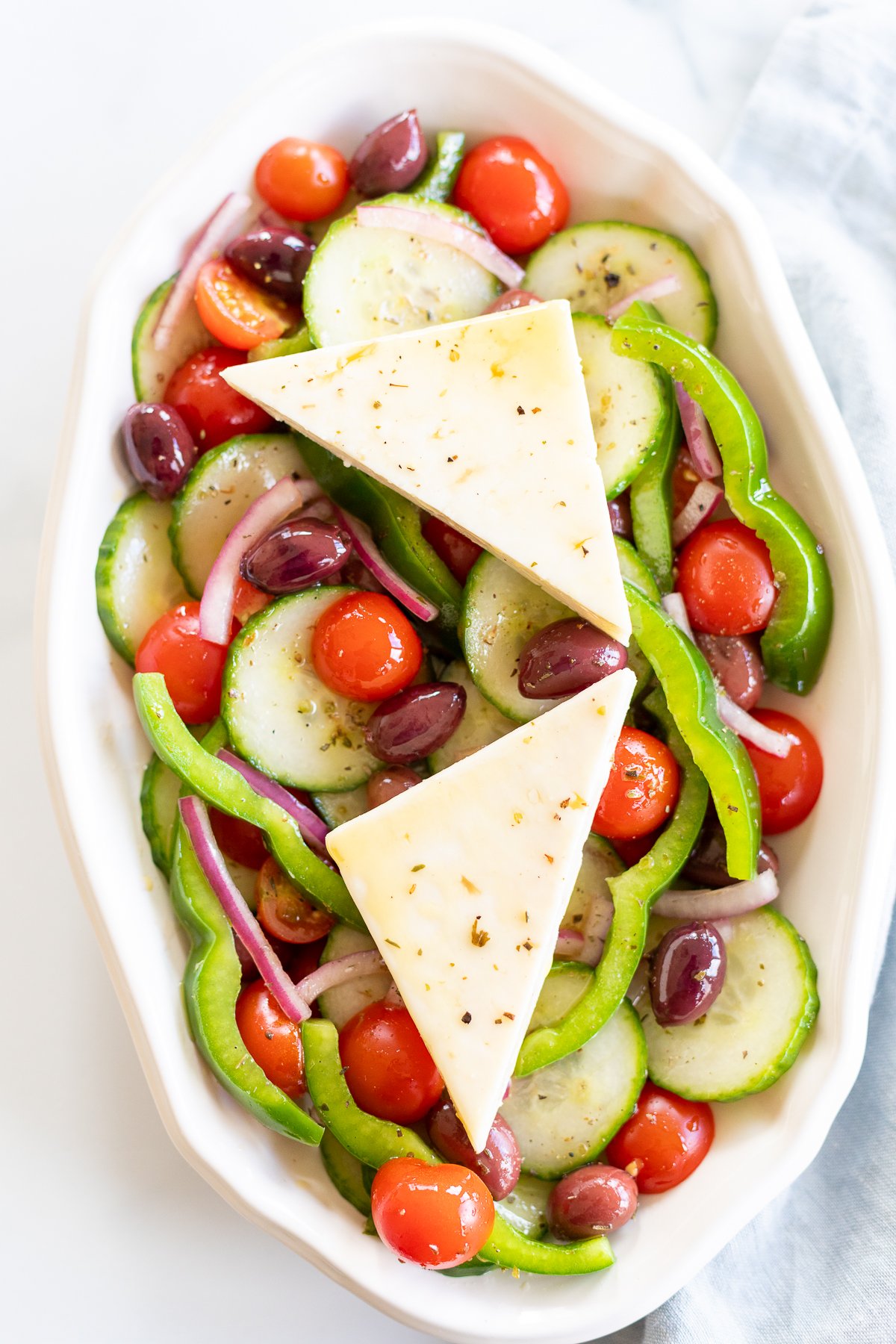
Dietary Considerations
- Gluten Free
- Dairy Free (ensure you’re choose a feta cheese made from sheep’s milk or goat’s milk)
- Nut Free
- Vegan
More Salad Inspiration
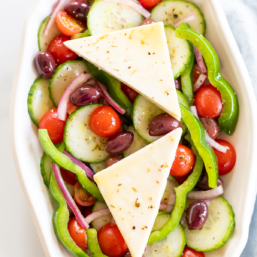
Greek Salad
Ingredients
- 8.5 to 9 ounces cherry tomatoes on vine halved
- 1 cup sliced English cucumber about 20 thin slices
- ½ green bell pepper sliced (about 1 cup)
- ⅛ medium red onion thinly sliced (about 1/3 cup)
- ½ cup olives we used pitted kalamata
- ½ cup feta cheese diced or thick-sliced
Greek dressing:
- ½ cup extra-virgin olive oil
- ¼ cup red wine vinegar
- ½ teaspoon dry oregano
- ¼ teaspoon sea salt
- ¼ teaspoon black pepper
Instructions
- Place the dressing ingredients in a jar and shake vigorously. (Alternatively, you can place them in a bowl and whisk them.)
- Pour the dressing over the salad ingredients, toss to coat, and sprinkle with additional oregano before serving.
Estimated nutrition information is provided as a courtesy and is not guaranteed.





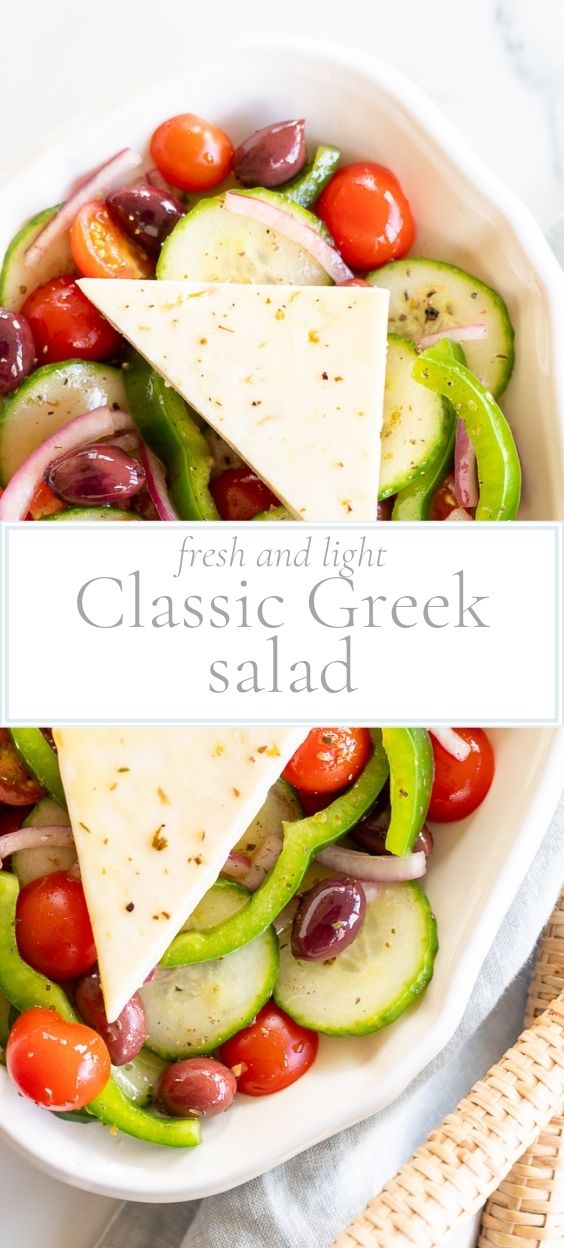

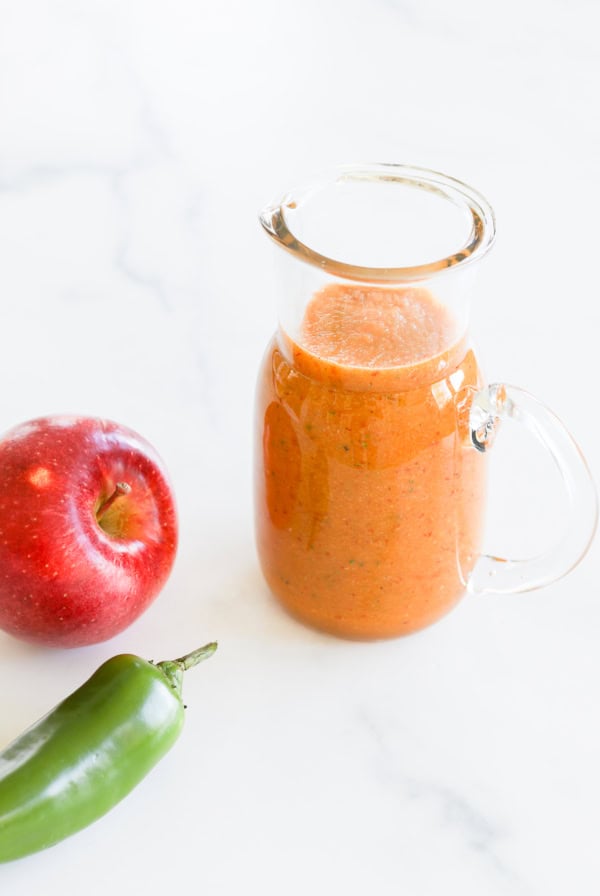







I want your Recipe please i want to make.
Hi Annette, I’m glad you enjoy it!!